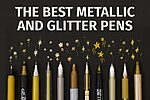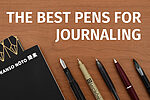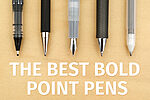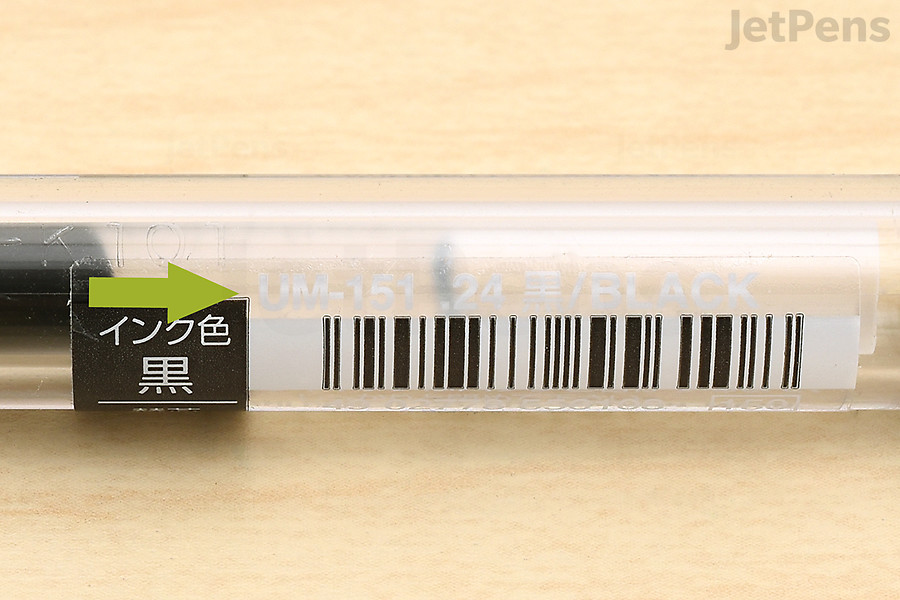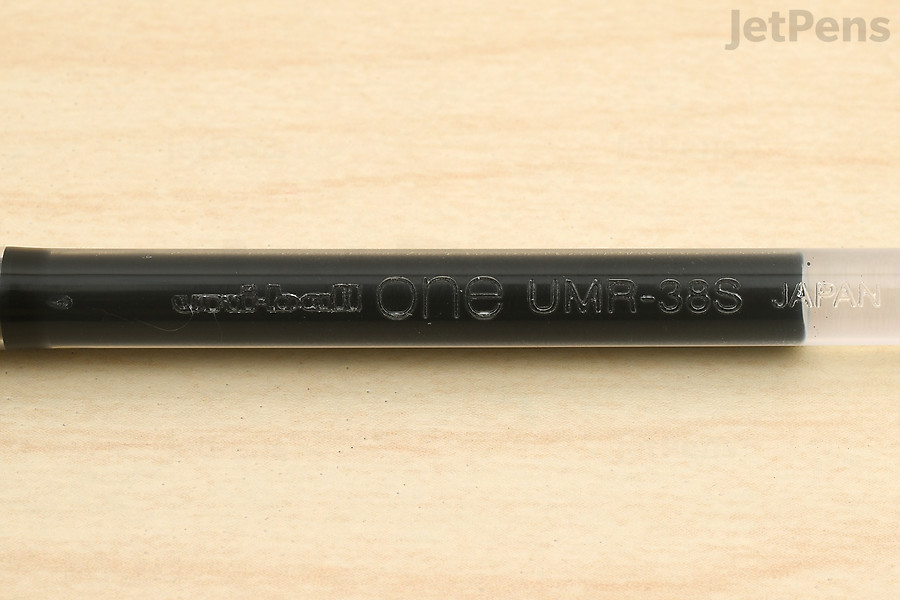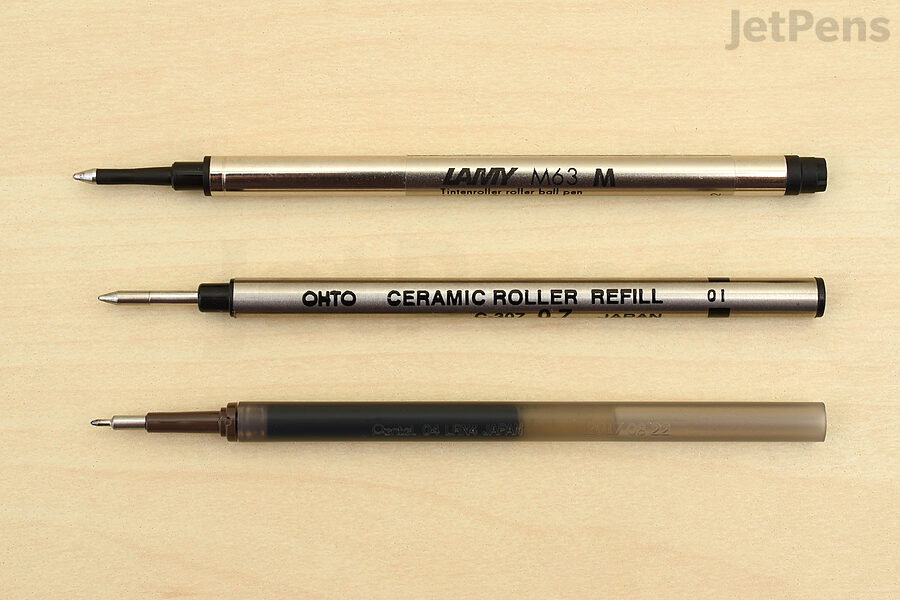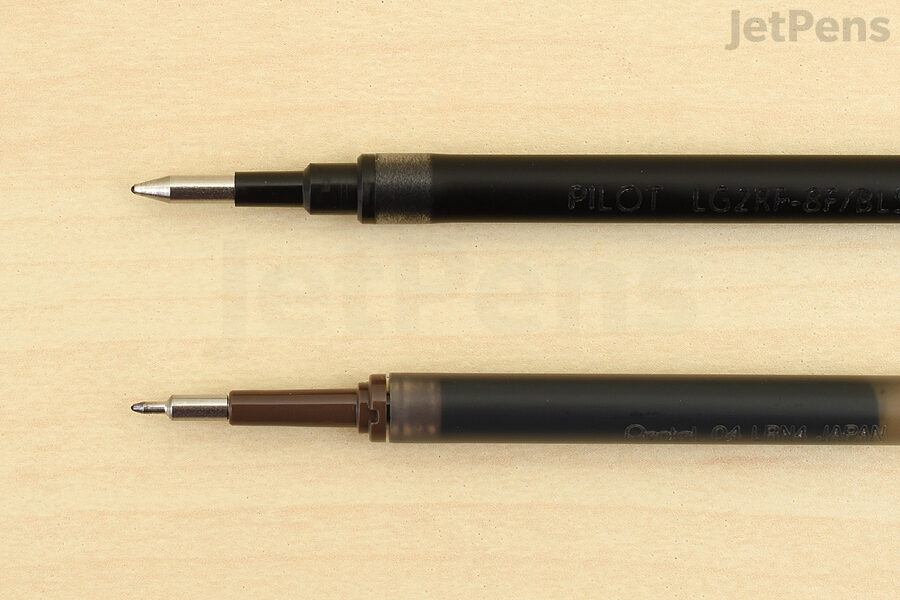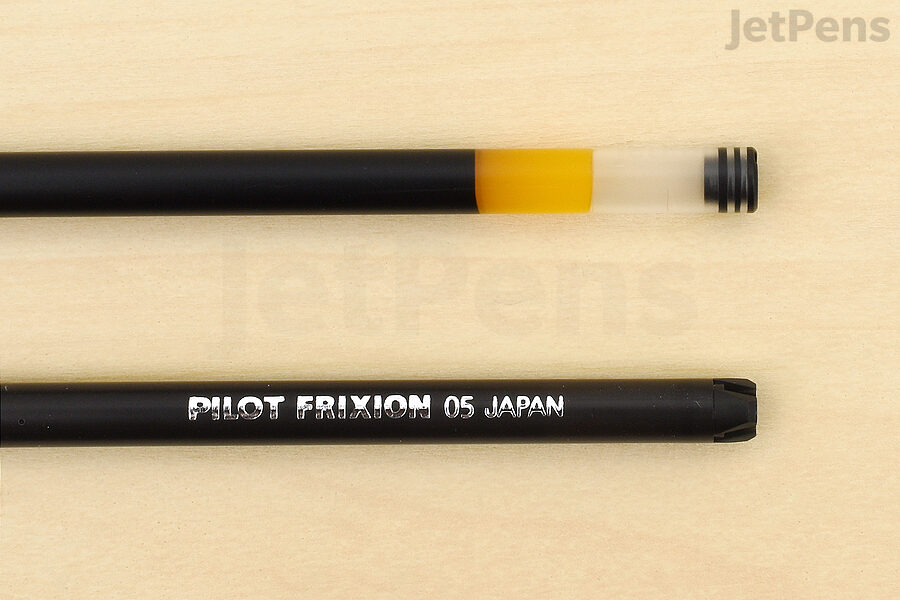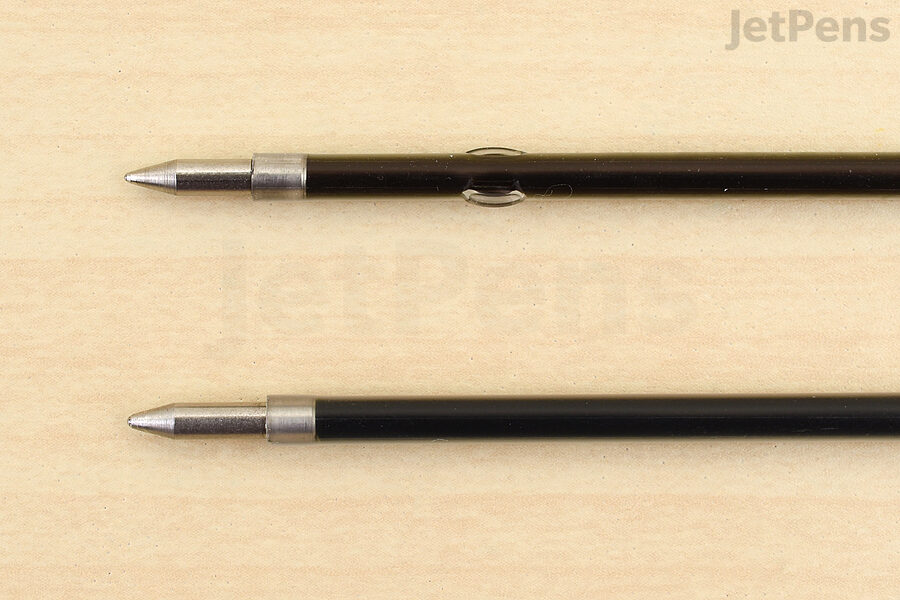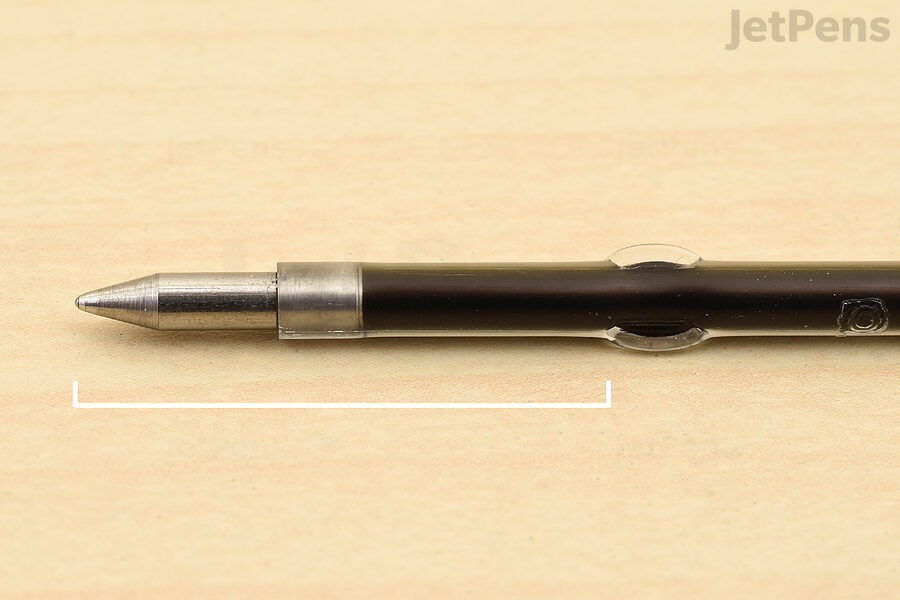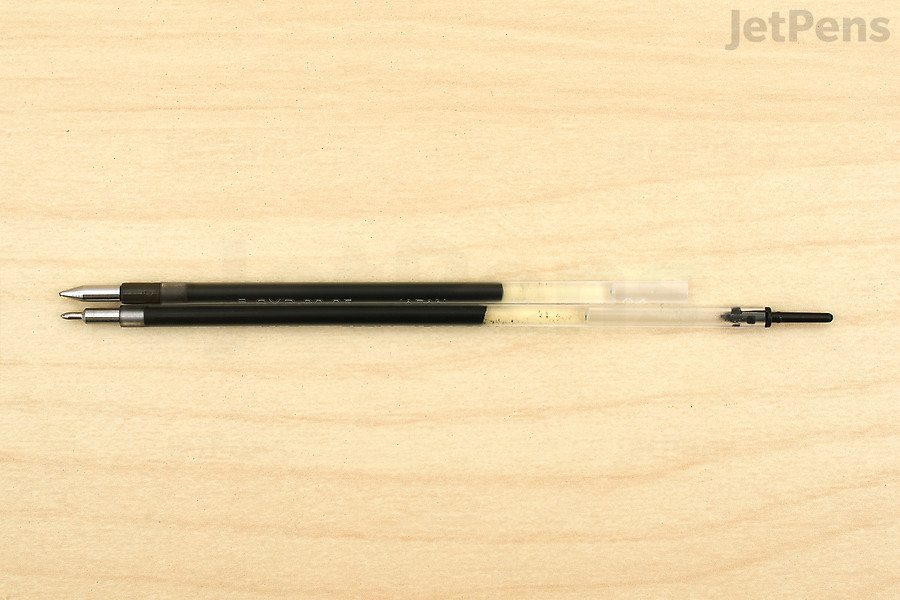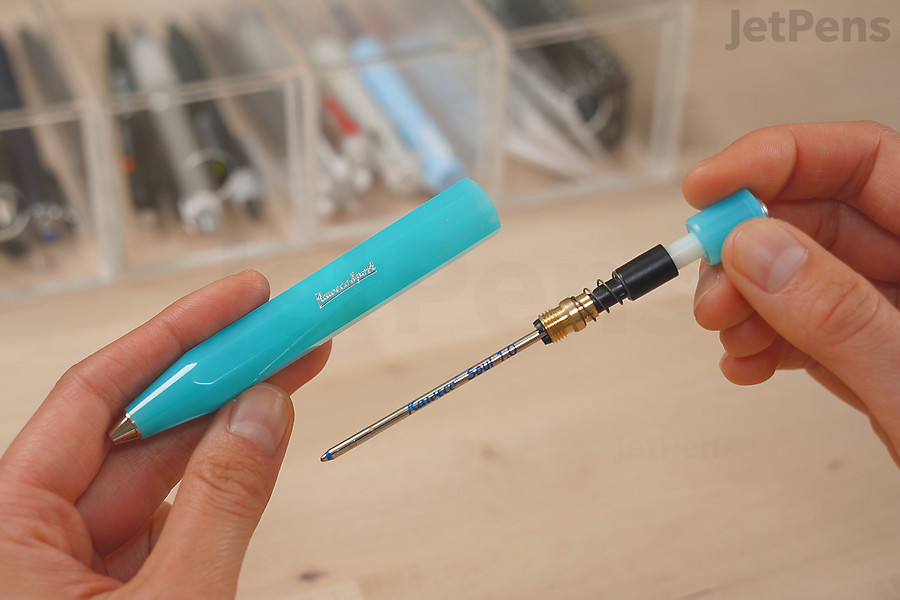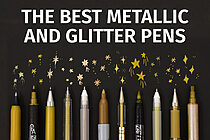How Do I Refill a Pen?
How Do I Refill a Pen?
For step by step instructions on how to refill pens and multi pens, read our guide.

The majority of pens can be refilled by unscrewing their grip sections or nose cones.
The majority of pens can be refilled by unscrewing their grip sections or nose cones. Some pens, like
Pentel EnerGel-X Gel Pens, open by unscrewing the clicker and clip section.

Multi pens that use two or more components in one pen body are refilled by unscrewing the grip section and inserting the refills into slots.
Multi pens that use two or more components in one pen body are refilled by unscrewing the grip section and inserting the refills into slots. As with single pens, multi pens have some exceptions, such as the
Pilot Hi-Tec-C Coleto Multi Pen, which is refilled by opening the top cap.
Can I Use a 0.5 mm Refill in a 0.7 mm Pen?
Can I Use a 0.5 mm Refill in a 0.7 mm Pen?
Yes, as long as the refill is compatible, it should generally fit regardless of its tip size. As we’ve mentioned in various parts of this guide, however, there are some exceptions.
Not all refill styles are perfectly standardized, and sometimes a refill from one brand won’t fit in a pen from another brand even though it may use the same refill style. When in doubt, always refer to the “Recommended Refills/Parts” button on a pen’s product page. If a refill isn’t included in the list for a pen, either it isn’t compatible with that pen or we haven’t confirmed it yet.
Can I Use a Gel Refill in a Ballpoint Pen and Vice Versa?
Can I Use a Gel Refill in a Ballpoint Pen and Vice Versa?
Yes, you can use a gel refill in a ballpoint pen and vice versa. The ink formula doesn’t matter as long as the refill fits in the pen body.
What is the Difference Between Ballpoint, Gel, and Rollerball Refills?
What is the Difference Between Ballpoint, Gel, and Rollerball Refills?
Ballpoint, gel, and rollerball are the three main types of inks you’ll find in refills. Each ink formula provides a different writing experience. Read our dedicated guide on The Difference Between Ballpoint, Gel, and Rollerball Pens for more information and recommendations; we’ve summarized the information below.

Ballpoint ink is viscous and oil-based, so ballpoint pens require more writing pressure.
Ballpoint ink is viscous and oil-based, so ballpoint pens require more writing pressure which can fatigue your hand or wrist. Ballpoint ink works well on low-quality papers with minimal bleedthrough or smudging. It’s also usually fast drying and waterproof.

Low-viscosity ballpoint ink is less viscous than typical ballpoint ink, with additional lubricants in its ink formulation allowing the tip’s ball to rotate well.
Low-viscosity ballpoint ink is less viscous than typical ballpoint ink, with additional lubricants in its ink formulation allowing the tip’s ball to rotate well. Writers who enjoy the effortless flow of gel ink but want the waterproofness and quick-drying qualities of a typical ballpoint ink should opt for low-viscosity ink.
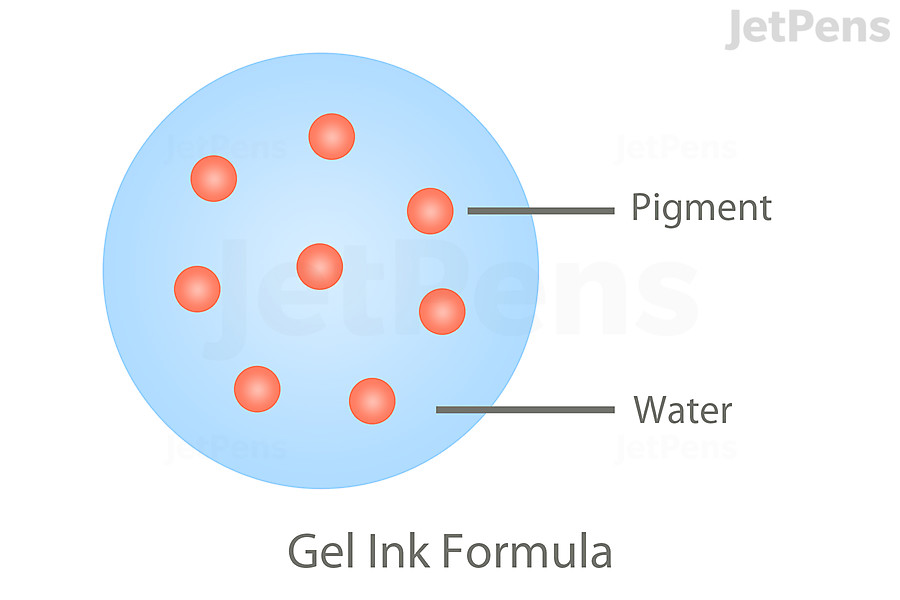
Gel ink is formulated with pigments suspended in a water-based gel. This combination results in ink that is vibrant and smooth.
Gel ink is formulated with pigments suspended in a water-based gel. This combination results in ink that is vibrant and smooth. Gel inks are available in the widest range of colors that require less writing pressure. However, they may skip occasionally because thin gel inks don’t always evenly coat the revolving ball in the pens’ tips.

Rollerball ink uses dyes dissolved in water, similar to dye-based
fountain pen inks. It flows freely, only needing the lightest touch to dispense ink.
Rollerball ink uses dyes dissolved in water, similar to dye-based
fountain pen inks. It flows freely, only needing the lightest touch to dispense ink. This may lead to ink bleeding through absorbent, low-quality papers. Additionally, you may experience more feedback (the tactical sensation of the pen’s tip traversing across the page) when writing with rollerball pens.
Why Can’t I Find a Refill in the Same Color As My Pen?
Why Can’t I Find a Refill in the Same Color As My Pen?

If you own a pen with a limited edition refill and want to reuse the pen when the refill runs out, you can refill it with a “standard” ink refill. Clicking on the “Recommended Refills/Parts” button on a pen’s product page will allow you to see all compatible refills that we’ve confirmed to fit in the pen and the colors they come in.
While many pens come in a rainbow of fun colors, replacement refills are often only available in basic colors like black, blue, and red. If replacement refills for your pen aren’t available in the color you want, you’ll have to buy a completely new pen.
If you own a pen with a limited edition refill and want to reuse the pen when the refill runs out, you can still refill it with a “standard” ink refill. Clicking on the “Recommended Refills/Parts” button on a pen’s product page will allow you to see all compatible refills that we’ve confirmed to fit in the pen and the colors they come in. Please note that the refill you choose may not be the same ink formula as the original refill and may provide a different writing experience.
What is the Difference Between a Refill and a Cartridge?
What is the Difference Between a Refill and a Cartridge?
There isn’t a hard and fast rule for using these terms, but when we say “refill,” we’re generally referring to a replaceable ink component with a built-in writing tip. When we say “cartridge,” we’re usually referring to a replaceable ink component that does not have a built-in writing tip. Cartridges are mainly used in fountain pens and brush pens, but some rollerball pens also use ink cartridges instead of refills.
What is an “Original Refill”?
What is an “Original Refill”?

We refer to an original refill as the exact same as what the pen comes with—this includes the model number, tip size, and color.
We refer to an original refill as the exact same as what the pen comes with—this includes the model number, tip size, and color. So if you’re looking for an exact replacement for a refill that has run out, this is what you’re looking for.
Why Would I Want to Use a Refill That is Different from the One My Pen Came With?
Why Would I Want to Use a Refill That is Different from the One My Pen Came With?
There’s nothing wrong with sticking to the same kind of refill your pen came with, but using different refills lets you experience a wider palette of ink colors, tip sizes, and ink formulas.




